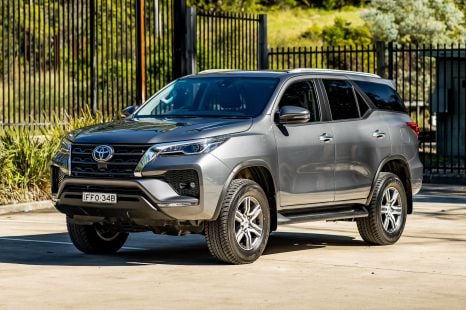

Matt Campbell
5 Days Ago
The turbocharged Stonic GT-Line continues to be a strong value option in the Light SUV segment, but the servicing costs might shock you.
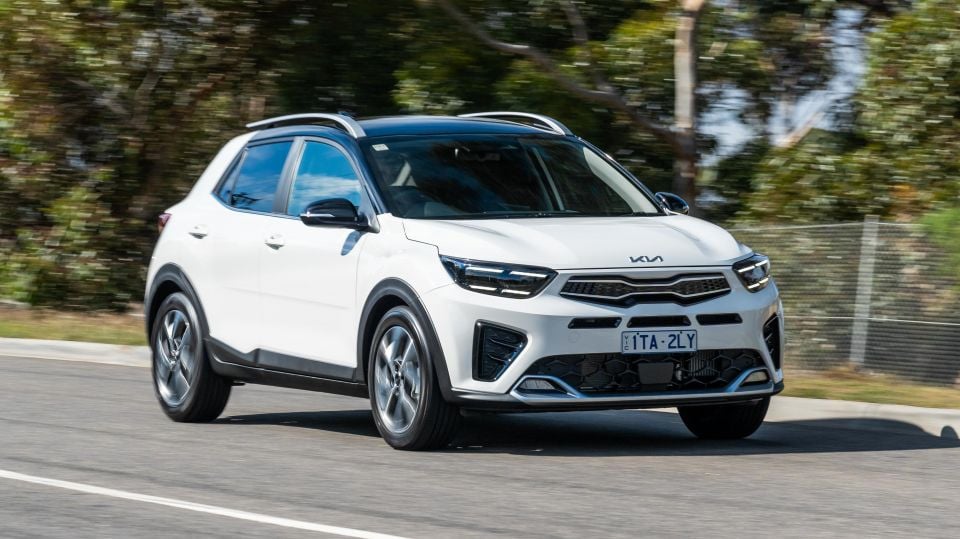
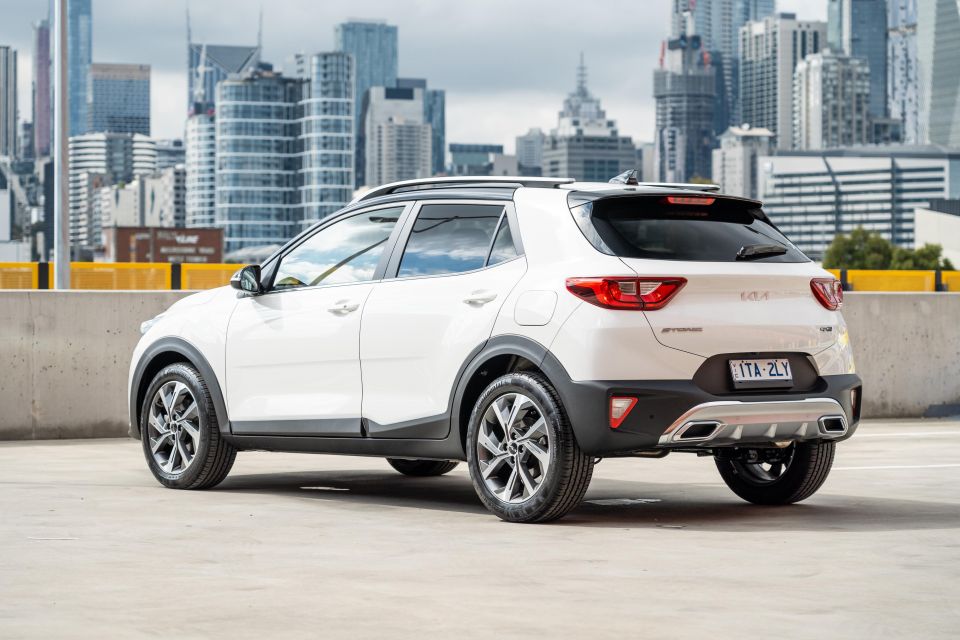

Quickly see how this car stacks up against its competition. Select any benchmark to see more details.
Take advantage of Australia's BIGGEST new car website to find a great deal on a Kia Stonic.
The Kia Stonic may have been a late starter in Australia, but it’s been quite the success for the Korean brand.
With sharp pricing and the surety of Kia’s seven-year warranty, the Stonic has quickly overtaken its cheaper Rio hatchback sibling in the sales race Down Under, and is one of the most popular vehicles in its class.
As it stands the Stonic is Australia’s second-favourite Light SUV according to VFACTS figures for the first half of 2022, second only to the venerable Mazda CX-3 and accounting for 17.6 per cent market share.

Like the Mazda, and just about every other competitor, the Kia Stonic is essentially a jacked-up version of a hatchback counterpart, in this case the aforementioned Rio.
In Australia the Stonic justifies its premium over the equivalent Kia Rio with extra equipment and features to go with its tougher SUV-inspired looks.
Here we test the top-spec 2022 Kia Stonic GT-Line to see whether the turbocharged flagship is the pick of the bunch.
While the range kicks off at $21,990 plus on-road costs for the Stonic S manual, the DCT-only Stonic GT-Line shown here is priced from $30,490 before on-roads or $32,190 drive-away according to Kia’s online configurator.
Despite being the top-spec member of its model family, the Stonic GT-Line actually lines up with base versions of most competitors, particularly those adorning European badges.
Key rivals include:
All prices exclude on-road costs
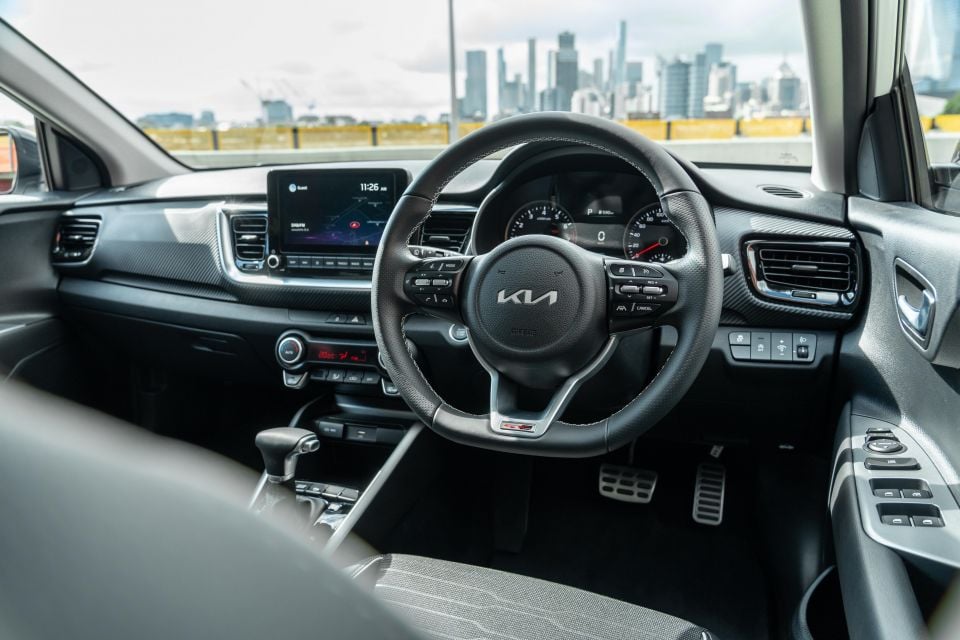
you’d be hard pressed to find any noticeable differences between the Stonic and the Rio hatch on which it’s based.
That means you get an uncluttered dashboard with clean lines and simple switchgear, as well as an 8.0-inch high-resolution running the brand’s latest infotainment and navigation software.
Kia and Hyundai’s native interface is clean and attractive with logical menus and snappy response times, and the Stonic’s standard navigation, DAB radio as well as wired Apple CarPlay and Android Auto means it’s well featured, too. There’s no embedded modem with online services like the Ford Puma, however.
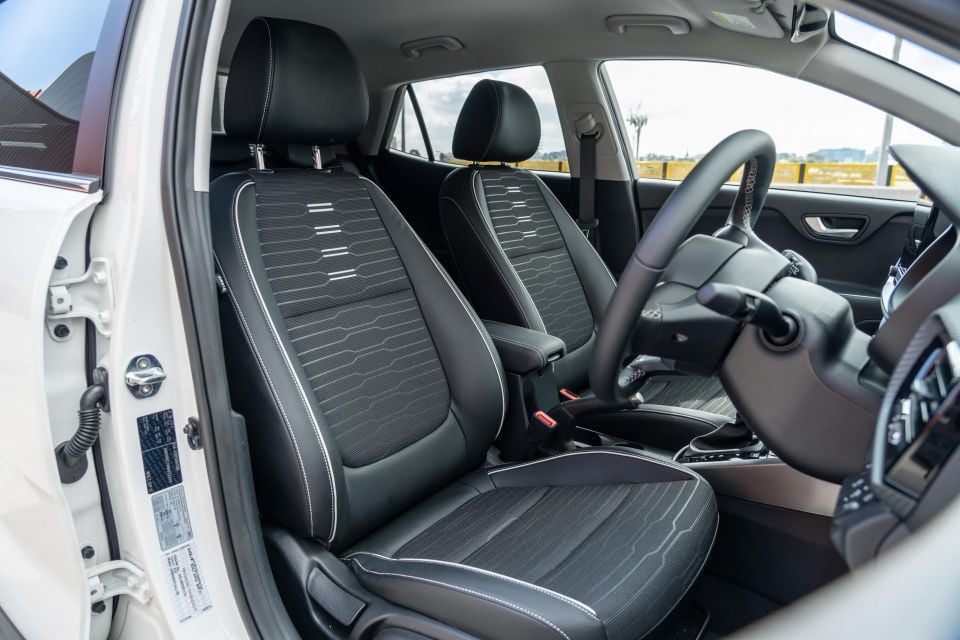
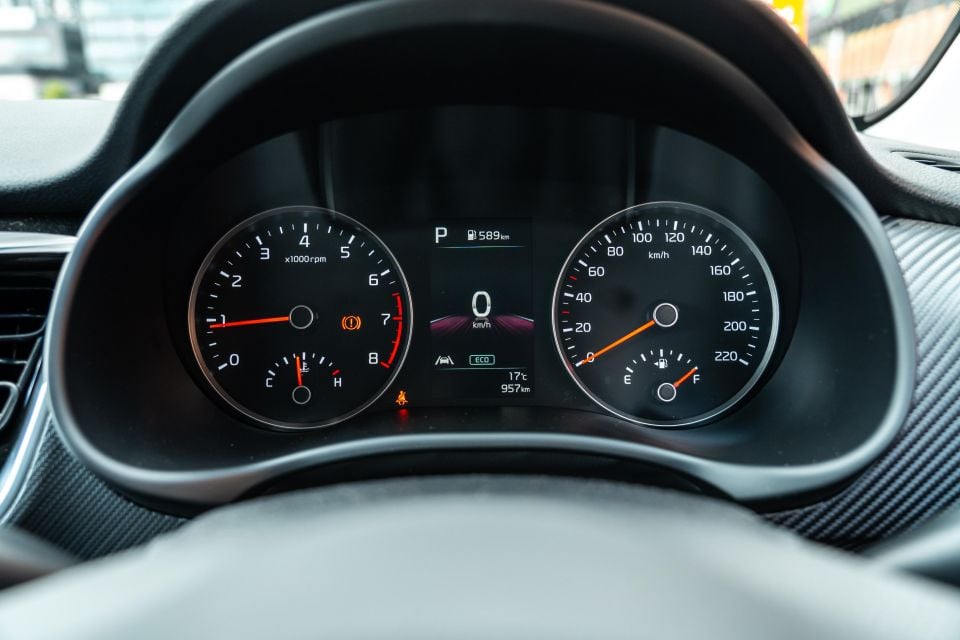
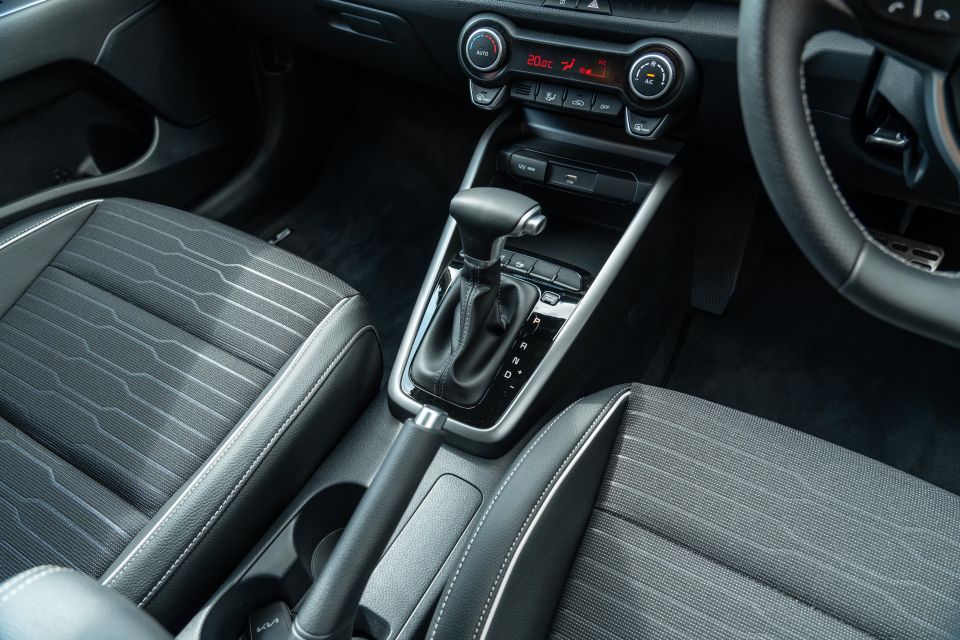
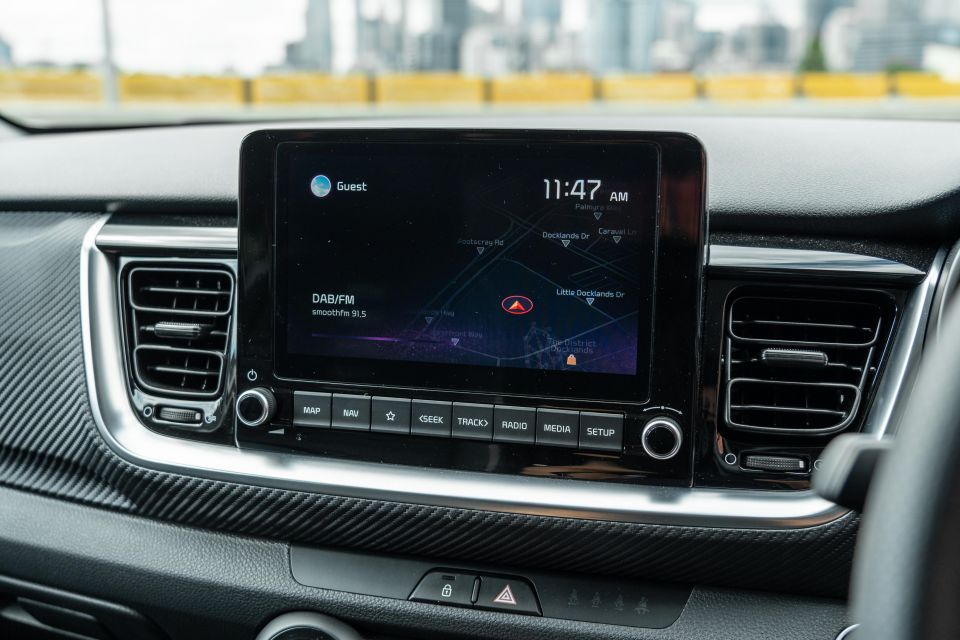
You feel an impression of width and airiness, credit to the Stonic’s squarer, boxier proportions. You do, however lack the soft-touch surfaces and leatherette trim on the dashboard – in fact, it’s hard plastics just about everywhere other than the elbow rests.
Ahead of the driver there’s analogue dials rather than digital ones, though the conventional tacho and speedo gauges flank a 4.2-inch colour supervision display which shows a digital speedometer readout amongst other menus and functions. It certainly does the job just fine.
The Kia’s storage solutions include a deep cubby under the centre stack with an inbuilt shelf, as well as large door bins and a cubby under the front-centre armrest.
Comfort up front is decent if not as good as some rivals, largely down to the seat positioning and range of adjustment that can limit lower back and under thigh support if you’re tall and leggy like me.
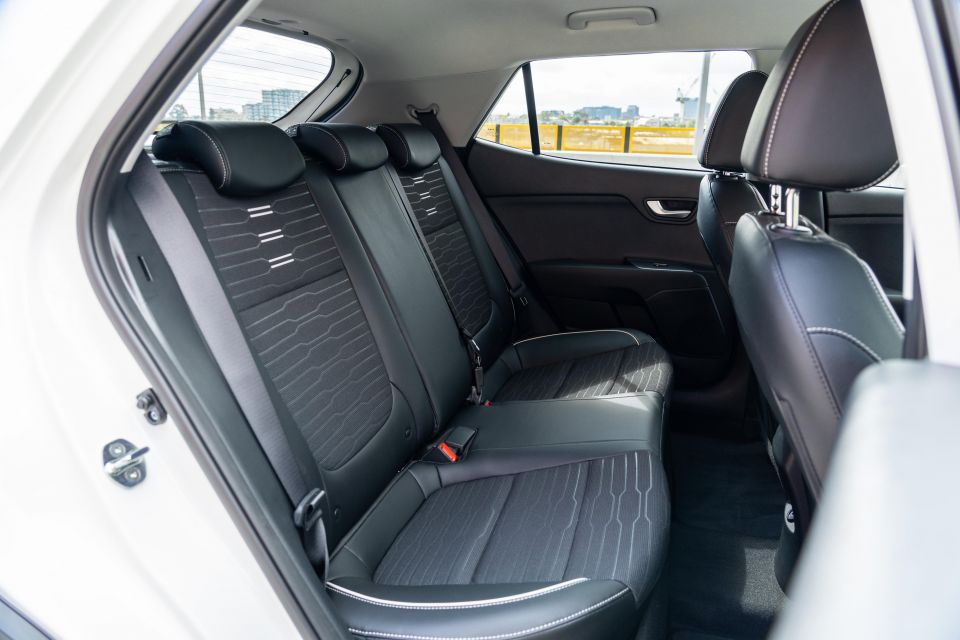

The fabric upholstery with leatherette bolsters are less likely to burn your bum in summer than leatherette trims in rivals, and feature a funky design pattern to make them less boring. The flat-bottom GT-Line steering wheel feels very good to hold and arguably is the more attractive tiller, too.
Hop into the second row and the Stonic is pretty accommodating, with average-sized adults able to sit behind average-sized adults.
It’s a proper four seater with the fifth pew in the centre best left for emergencies. Leg and knee room are good, as is headroom.
Like most rivals, there’s no air vents and no fold-down centre armrest, but there is a USB charging point back there and a map pocket behind the front passenger seat. ISOFIX anchors feature on the outboard positions, as is customary, and there’s top-tether points across all three rear seats.
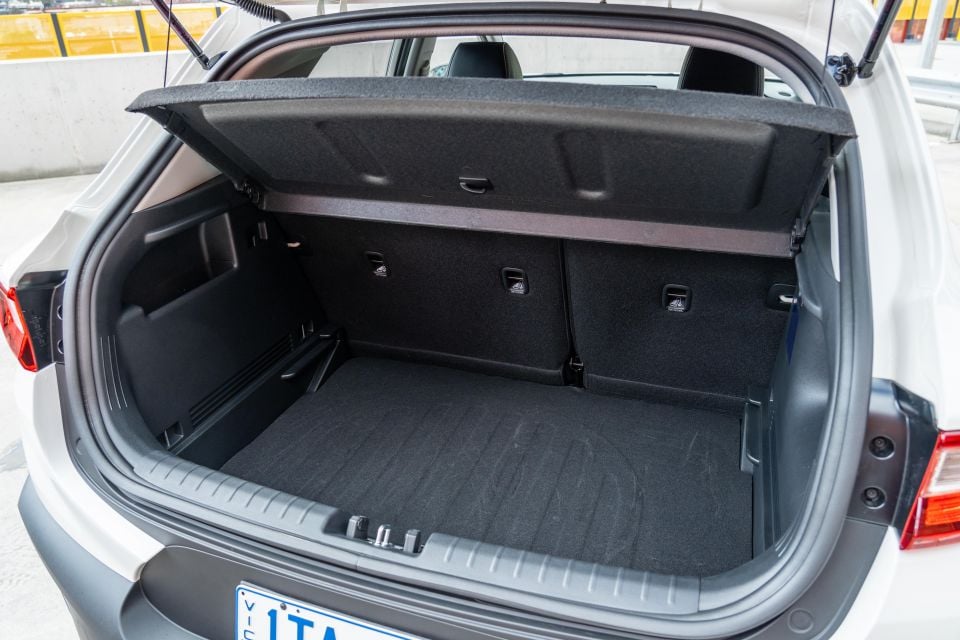
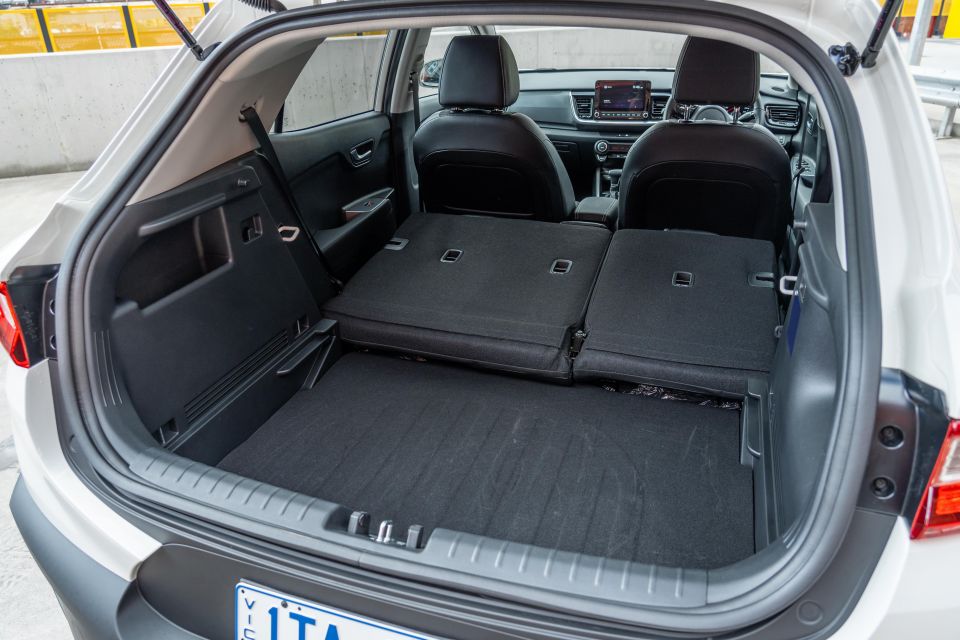
Boot capacity is quoted at 332L with five seats in use, which expands to a more accommodating 1132L with them folded.
There’s no adjustable floor to even out the step between the boot floor and seat backs, despite there being cutouts for one – clearly this feature is offered in other markets.
There’s a space-saver spare wheel under the boot floor, but not any real storage.

The GT-Line is the only Stonic in Australia to feature the brand’s 1.0-litre T-GDi turbocharged three-cylinder petrol engine, shared with the Australian-market Rio GT-Line hatchback.
Like its Rio sibling, the Stonic’s turbo three-pot puts out 74kW (4500-6000rpm) and 172Nm (1500-4000rpm), which is sent to the front wheels only via a seven-speed dual-clutch automatic as standard.
Australia misses out on the more powerful 88kW/200Nm version of the same engine offered in Europe, which is now tied with fuel-saving 48V mild-hybrid technology. There’s no more affordable manual option for the turbo, either.
Like manual versions of lower grade Stonics, which feature a 1.4-litre naturally-aspirated petrol engine, the Stonic GT-Line is one of the few Kia vehicles in Australia featuring idle stop/start technology.
Kia claims the Stonic GT-Line will consume 5.4L/100km on the combined cycle, with cheaper 91 RON unleaded deemed suitable for its 45-litre fuel tank. It also quotes emissions of 112g/km.

The GT-Line version of the Stonic may be wearing an assortment of sporty styling enhancements, but its feel on the road is much more focused on comfort and efficiency compared to something like a Ford Puma or Hyundai Kona.
From the moment you set off (in default Eco mode, weirdly), the Stonic’s doughy throttle response, light controls and muted engine note is less engaging, but some might prefer the more relaxed vibe.
The Kia’s 1.0-litre turbo has a thrummy note to it, but the Kia’s is a little more rattly and harsh if you really boot it. Further, the seven-speed dual-clutch auto doesn’t feel eager to get going off the line (especially after firing up after the idle start/stop system has been engaged), and it hunts for high gears much earlier in the name of efficiency.
Kia Australia doesn’t quote a 0-100 time for the turbocharged Stonic, though overseas specifications serve as a guide. The brand’s UK website says this 74kW 1.0 T-GDi with seven-speed DCT accelerates from 0-100 in 11.7 seconds.

At city speeds though, the Stonic’s little triple offers ample torque to get up to signed speed limits without stress, and 100km/h isn’t a total chore to reach either. Once at triple figures, the Stonic settles into seventh at around 2250rpm and happily putts along.
One thing the Stonic benefits from is a local suspension tune, something Kia’s Australian division has prided itself on for some time. The GT-Line gets a different tune to the S and Sport versions of the Stonic, to be a little more in line with its sportier branding.
The Stonic balances ride comfort with dynamic ability quite well, noticeably softer than something like a Ford Puma while also still having a good level of body control in corners. However, occasionally the torsion beam rear end is a little sharp and boomy over bigger hits.
Likewise the steering is on the lighter side and isn’t as quick as some rivals, but it’s still accurate and progressive making it a nice, fluid thing to steer.
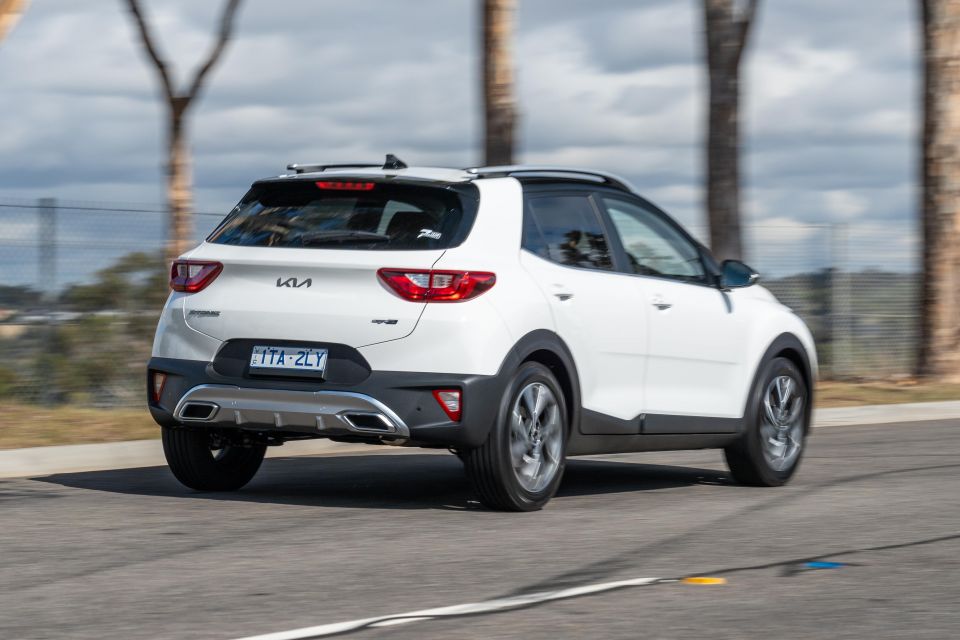
Such is the chassis’s competence that you’re left wanting for a more substantial powertrain. Pity Kia doesn’t offer the beefier 88kW/200Nm tune of the 1.0 T-GDi anymore, given it’s solely available with expensive 48V mild-hybrid tech globally. The extra grunt could go a long way though, as it shaves off a whole second from the UK model’s 0-100 claim.
Speaking of things we miss out on in the Australian model, locally-delivered Stonics don’t get a range of driver assistance systems offered in the European spec.
Were we to get the same available features as say, Europe and the UK, the Stonic could match most rivals with adaptive cruise control, blind-spot monitoring and rear cross-traffic alert. Alas no, it’s off the menu for us.
Competitors such as the Toyota Yaris Cross offer a full gamut of assistance features which essentially facilitate semi-autonomous highway driving across the range. Plus, a similarly-priced Kia Cerato also offers these features.
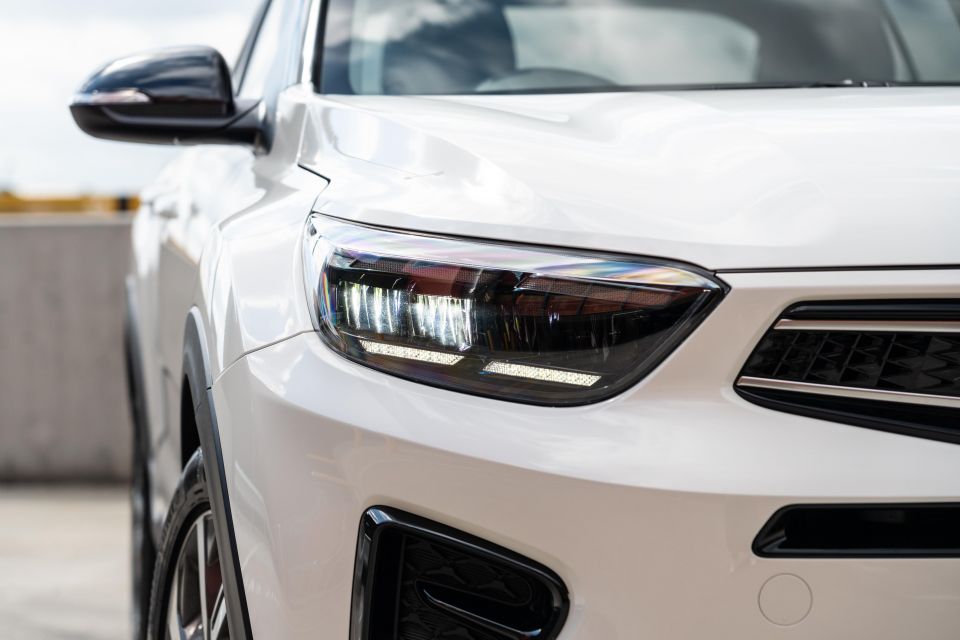



Stonic GT-Line highlights:
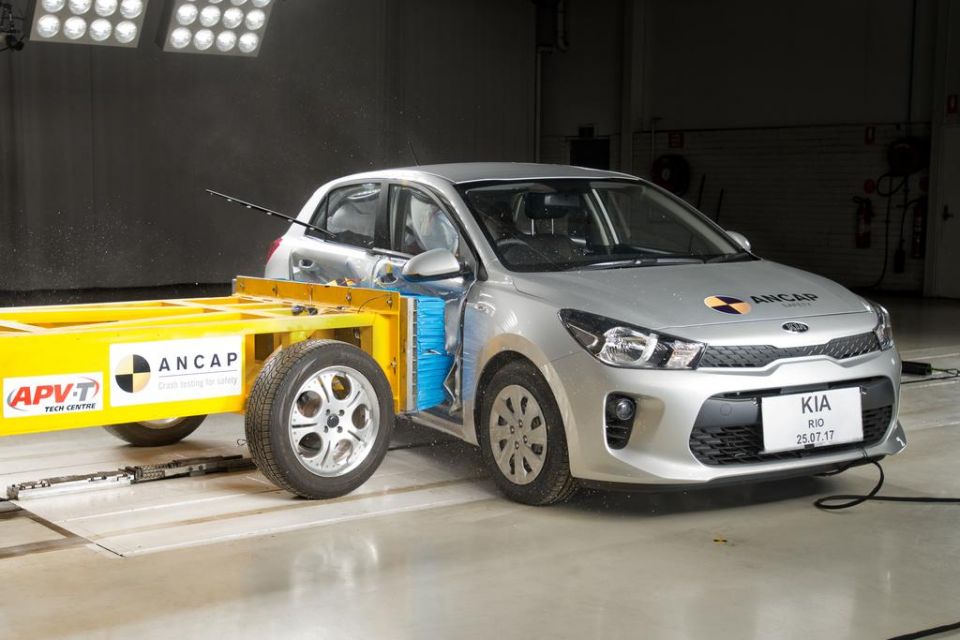
The Stonic carries over the Rio hatchback’s 2017-dated five-star rating with testing conducted by ANCAP against the old scoring system.
The Rio achieved 35.52 out of 37.00 points, including a frontal offset score of 14.52 out of 16.00 and a perfect side impact rating of 16 out of 16.
Further, the Rio and Stonic weren’t required to have active safety features like AEB and lane-keep assist to make a five-star threshold.
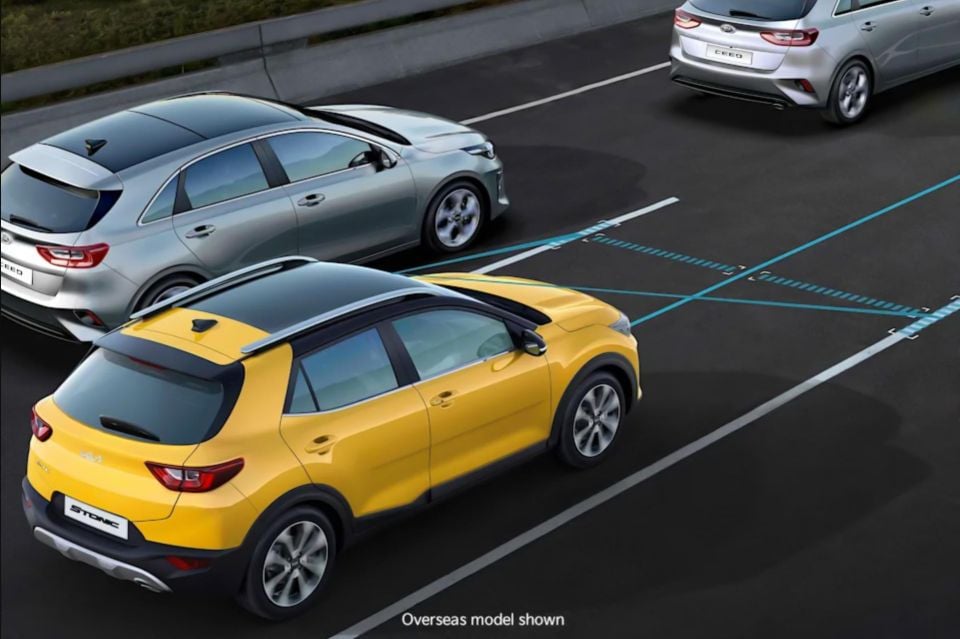
Standard safety features include:
Unfortunately, Australian models don’t offer blind-spot monitoring, rear cross-traffic alert and adaptive cruise control like European models, despite being made in the same factory. Same goes for local versions of the Rio.
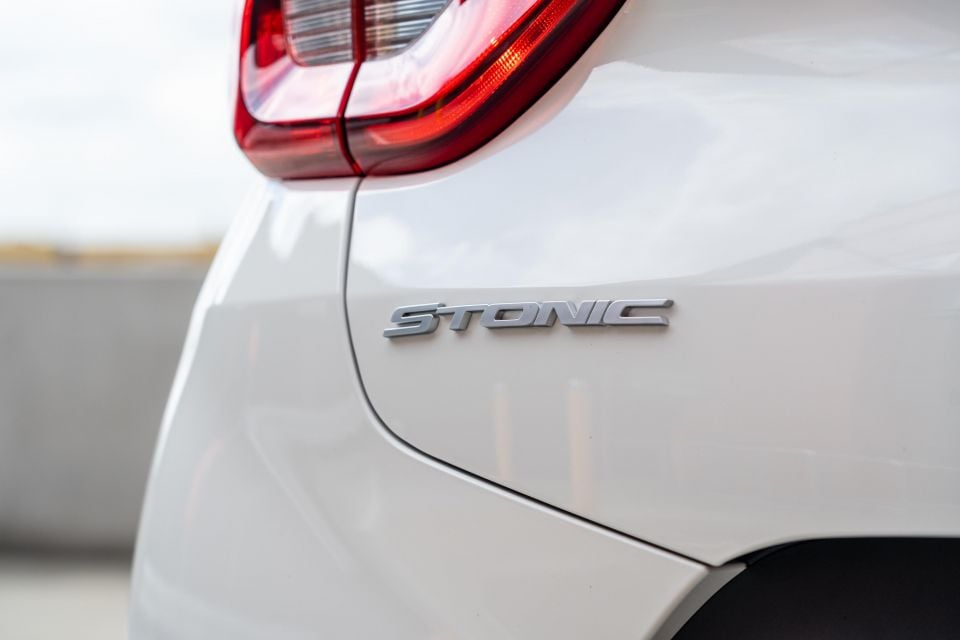
Kia’s range is covered by a seven-year, unlimited-kilometre warranty which also includes roadside assistance and capped-price servicing.
Speaking of maintenance, the Stonic GT-Line has slightly shorter intervals than its naturally-aspirated brethren, requiring visits to the dealer every 12 months or 10,000km (not 15,000km).
Pricing for the first seven visits is quoted at $283, $484, $338, $719, $319, $602 and $569, equating to a total of $3314 for the first seven years or 70,000 kilometres. Ouch.

The little Stonic was pretty frugal in real-world testing, ending a week of testing showing an indicated average of 6.6L/100km over 468km of mixed driving – decent, but still up on Kia’s 5.4L/100km claim.
Our time with the Stonic included mostly daily commuting which mixed in high-traffic peak-hour conditions as well as freeway use.
As noted earlier, the Stonic GT-Line can run on cheaper 91 RON regular unleaded which is unusual compared to rivals.

While conceptually the Stonic is just a Rio in SUV dress-ups, it makes a strong case for itself in the Australian market.
Unlike regions like Europe and the UK, you can’t get the Rio in Australia specified to the same level as the Stonic GT-Line, meaning no LED headlights and no satellite navigation.
Sure, that doesn’t necessarily make the $4000 premium any sweeter, but there’s more. The Stonic’s boot is over 50L more accommodating than the Rio’s with five seats in use, and 77L more with the rear seats folded. It also rides 25mm higher, which no doubt helps with ingress and egress.
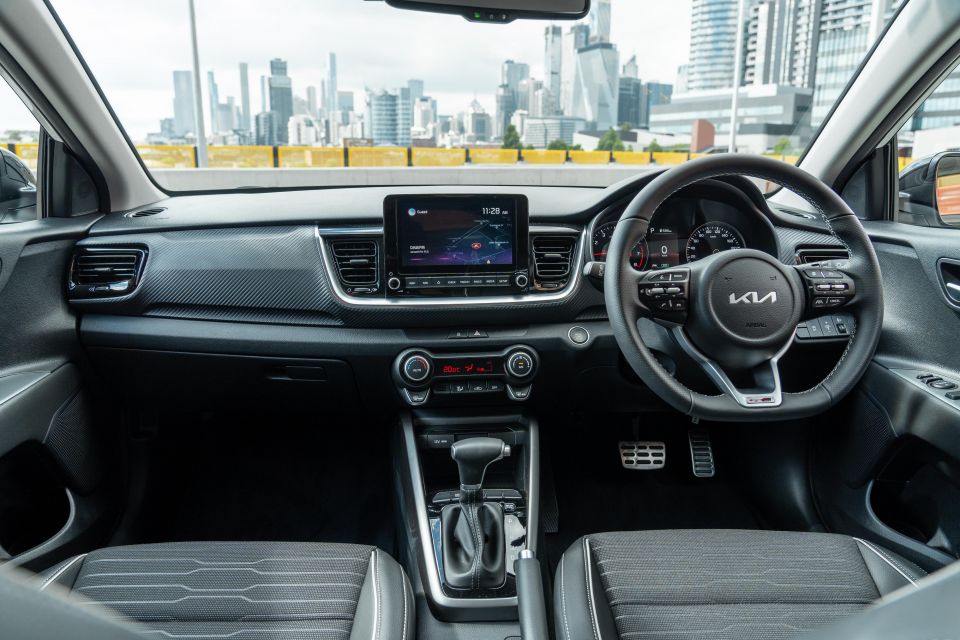
Altogether the Stonic GT-Line feels like a more complete vehicle than the Rio on which it’s based, and at just over $32,000 drive-away it’s a relative bargain compared to many rivals, which usually start at that price point.
We’d like to see Kia offer the missing safety features available abroad, but as it stands the Stonic covers all bases and then some, while offering enough performance and efficiency to remain competitive against the competition.
There’s also that seven-year warranty, albeit combined with pricey servicing. If you can do without the turbo punch and some features, the mid-grade Sport with its naturally-aspirated engine and longer 15,000km service intervals could be a look.

Click the images for the full gallery
MORE: Everything Kia Stonic
Take advantage of Australia's BIGGEST new car website to find a great deal on a Kia Stonic.
James is an automotive journalist based in Melbourne, Australia. Before joining CarExpert.com.au in 2020, James has worked at leading auto media outlets including Carsales and CarAdvice, as well as at Pulse agency for Ford Australia's communications team. In 2019 James made Mumbrella's 'Top 20 most prolific web authors in Australia' list after publishing 1,360 articles between March 1, 2018 and February 28, 2019 for CarAdvice. James is also an Ambassador for Drive Against Depression – an Australian charity whose mission is to support mental wellness through the freedom of driving and a shared love of cars.


Matt Campbell
5 Days Ago
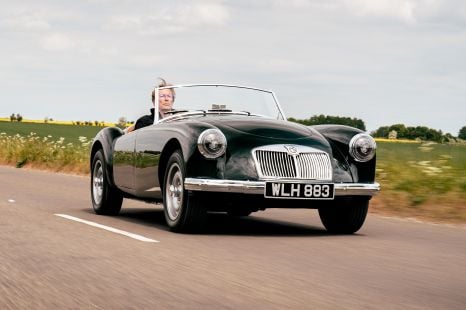

Angus MacKenzie
4 Days Ago
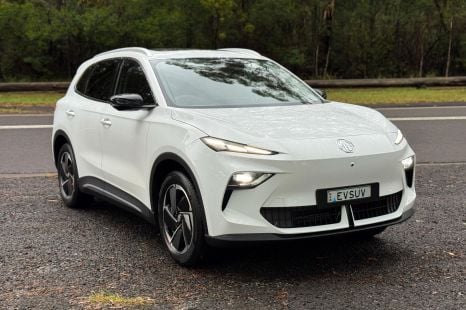

Matt Campbell
3 Days Ago
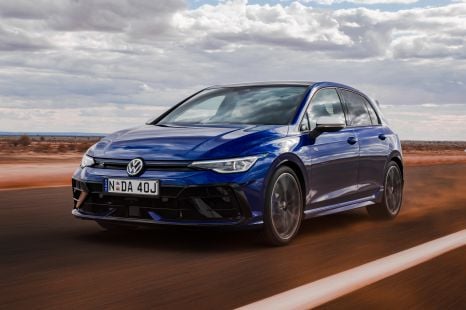

James Wong
2 Days Ago
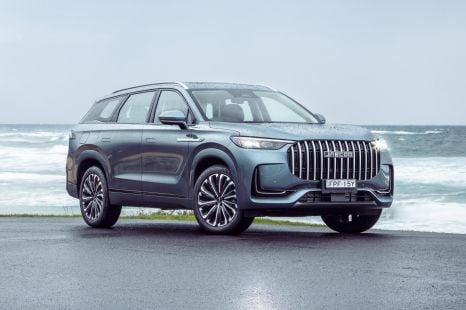

William Stopford
22 Hours Ago
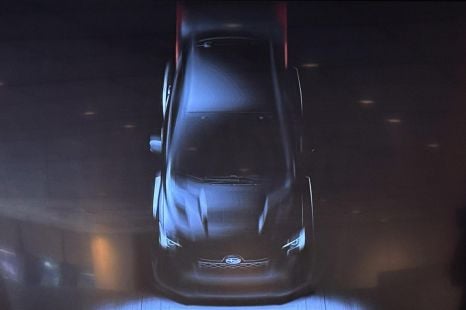

Damion Smy
20 Hours Ago